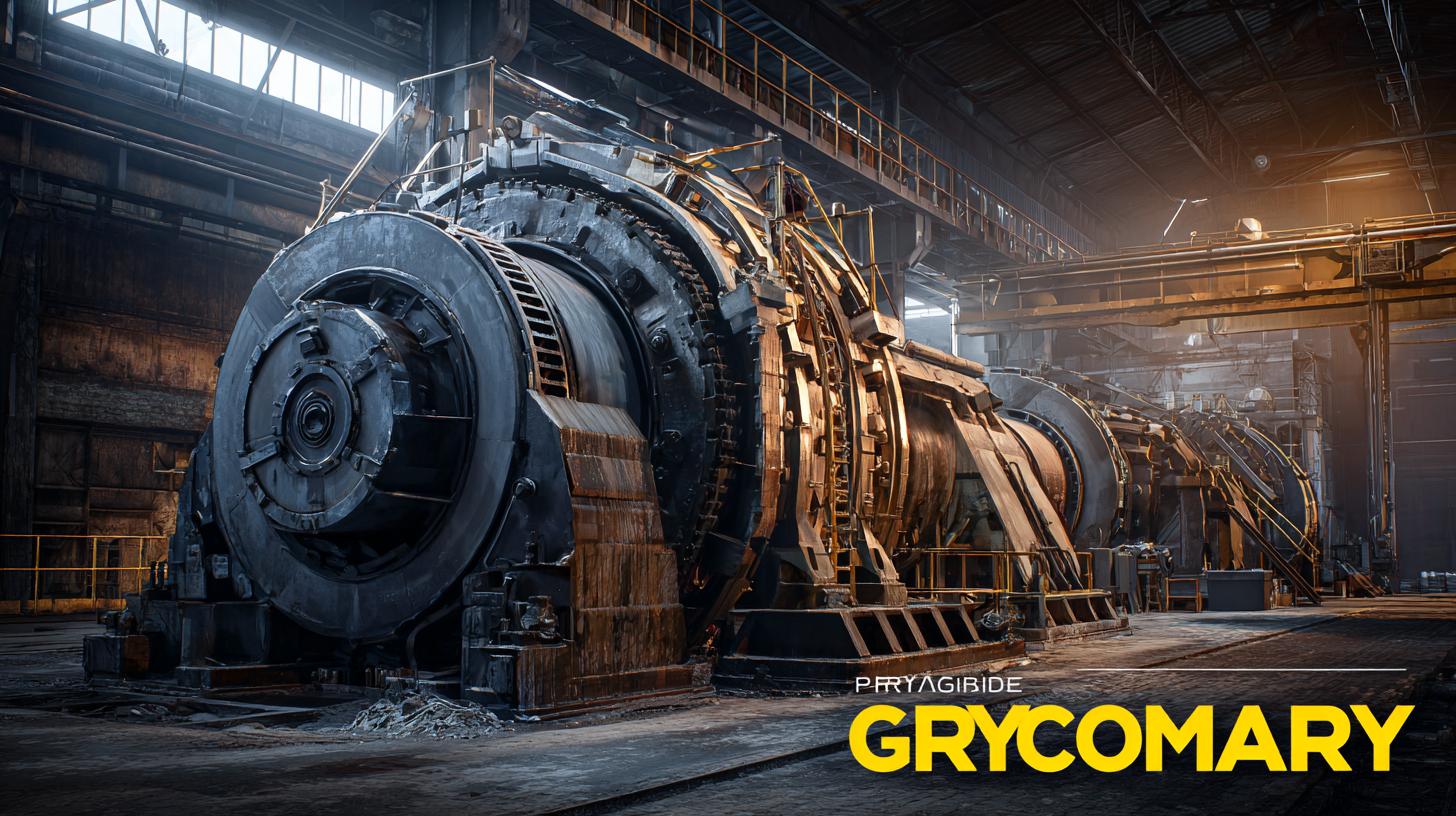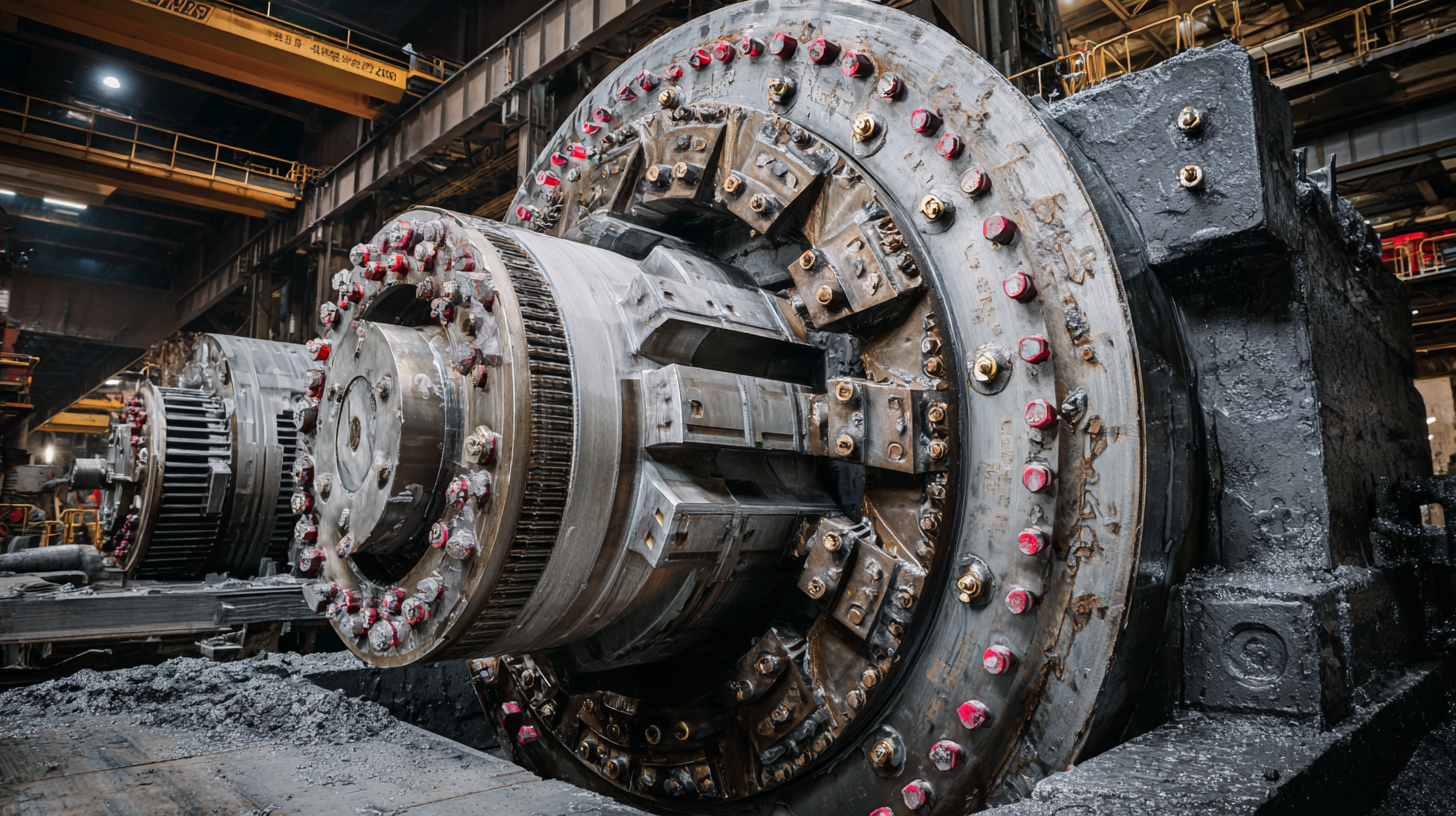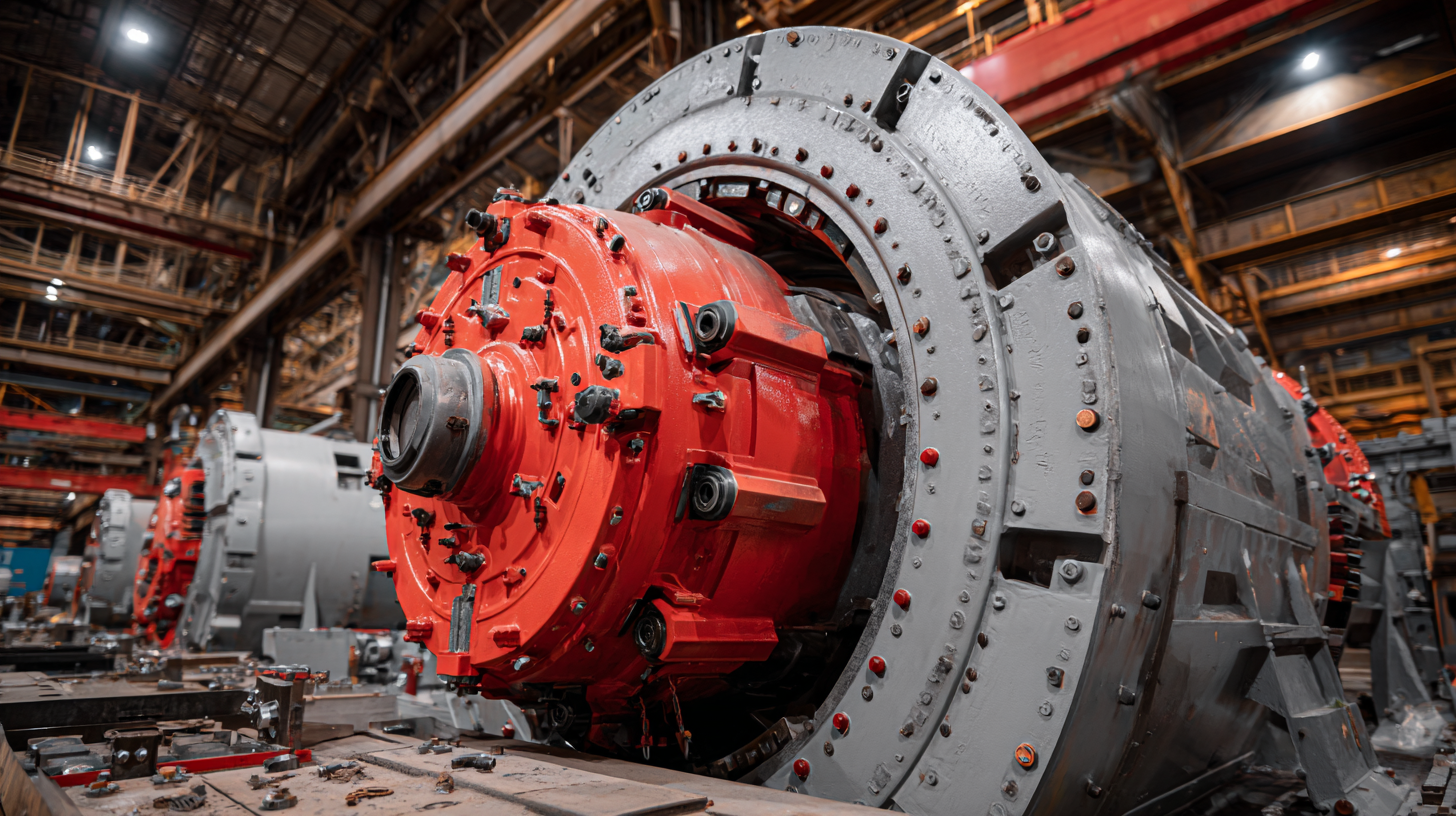
-
Home
-
About Us
-
Products
-
News
-
Blog
-
Contact Us
Leave Your Message

In the ever-evolving landscape of the mining and aggregate industries, the demand for reliable and high-performance machinery is paramount. According to a recent report from Global Industry Analysts, the global market for Primary Gyratory Crusher Parts is projected to reach USD 4.2 billion by 2026, underscoring the critical role these components play in maintaining operational efficiency and productivity. As primary gyratory crushers are the backbone of many crushing operations, sourcing the best parts globally has become essential for minimizing downtime and maximizing ROI. By implementing proven sourcing tactics, companies can ensure the longevity and reliability of their machinery, while benefiting from advancements in technology and materials that enhance performance and safety.

This blog explores five effective strategies for acquiring top-quality Primary Gyratory Crusher Parts, aimed at helping businesses optimize their supply chains and maintain a competitive edge.
When sourcing quality primary gyratory crusher parts, it’s essential to adopt best practices that ensure you select reliable suppliers. According to a report by Research and Markets, the global market for mining machinery is projected to reach $166 billion by 2025, emphasizing the increasing demand for high-quality components. In this competitive landscape, understanding a supplier's track record is crucial. Look for suppliers with ISO certification and a proven history of delivering durable parts. Reviews from existing clients can offer valuable insights into product reliability and customer service levels.
Another effective tactic is to assess the supplier’s manufacturing processes. According to a study by Frost & Sullivan, companies using advanced manufacturing technologies to produce crusher parts reported a 20% reduction in operational downtime. Therefore, inquire about the materials used and the technology implemented in part fabrication. Suppliers who invest in innovation and quality control are more likely to provide products that meet stringent industry standards. Prioritizing these aspects not only enhances performance but also ensures longevity and reduces the total cost of ownership over time.
In today's competitive mining and construction sectors, leveraging technology in the procurement process of primary gyratory crusher parts has become increasingly vital. Digital tools and platforms enable businesses to streamline their sourcing strategies, allowing for more efficient management of supplier relationships and inventory levels. Utilizing advanced software solutions, companies can gain access to a wider array of suppliers, compare pricing and quality, and ensure timely delivery of essential components with minimal disruption to operations.
Moreover, incorporating data analytics into procurement strategies can lead to significant improvements in decision-making. By analyzing historical data and market trends, companies can anticipate demands and make informed choices about when and where to source parts. This not only ultimately reduces costs but also enhances operational efficiency by ensuring that the right parts are available at the right time. Embracing technology in this way allows for a more proactive approach to sourcing, empowering businesses to stay ahead of the competition while maintaining high standards of productivity and reliability.
This chart illustrates the effectiveness of various procurement strategies for sourcing primary gyratory crusher parts across global markets. Each tactic's score indicates how well it optimizes the procurement process in terms of cost-efficiency, supplier reliability, and delivery speed.
In today’s competitive landscape, sourcing high-quality primary gyratory crusher parts requires a deep understanding of global supply chain dynamics. Entering the international market means navigating various complexities including regulations, tariffs, and shipping logistics. Developing relationships with reliable suppliers across key manufacturing regions can significantly enhance the quality and consistency of parts sourced.
One effective tip is to leverage technology to monitor suppliers' performance. By utilizing data analytics, you can assess the reliability and quality metrics of potential partners, ensuring that your sourcing decisions are informed and strategic. Another essential tactic is to maintain flexibility in your supply chain. Establishing multiple supplier relationships can provide a buffer against disruptions, allowing for a seamless flow of parts even during unforeseen circumstances.
Communication plays a vital role in managing your global supply chain. Regularly engaging with suppliers to discuss expectations, challenges, and innovations helps build a strong partnership. This not only fosters trust but also ensures that you stay ahead in obtaining the best parts for your gyratory crushers. By combining technology, flexibility, and clear communication, you can master the art of sourcing quality parts globally.

Material quality plays a crucial role in the efficiency of primary gyratory crushers. A study by the International Journal of Mineral Processing reveals that using high-quality materials for crusher parts can improve wear resistance and operational lifespan by up to 25%. Components such as the mantle and bowl liner are subjected to intense forces and abrasive materials, making their quality directly linked to the overall performance of the gyratory system. High-quality alloys and heat-treated steels can minimize wear and reduce downtime, thus enhancing productivity in mining and aggregate operations.
When sourcing components, consider the following tips to ensure you select high-quality materials: First, always check for certifications and industry standards, such as ISO or ASTM. These certifications assure that the materials used meet strict quality and performance benchmarks. Second, look for suppliers with a proven track record and customer testimonials that highlight their commitment to quality and after-sales support. Finally, evaluate the manufacturing processes employed by suppliers, as advanced techniques such as precision casting and machining can significantly improve the durability of the crush parts.
Investing in superior materials not only maximizes crusher efficiency but also minimizes the total cost of ownership over time. As industry trends shift toward sustainable practices, choosing high-quality parts can also lead to better energy efficiency, reducing the environmental footprint of mining operations.
| Tactic | Description | Material Quality Impact | Supplier Certification |
|---|---|---|---|
| Tactic 1 | Conduct Thorough Research on Suppliers | High-quality materials can enhance lifespan and reduce downtime. | ISO 9001 Certification |
| Tactic 2 | Assess Material Properties | Impact resistance improves operational safety and efficiency. | Material Certification (e.g., ASTM) |
| Tactic 3 | Utilize Online Platforms | Broad access to suppliers with varied material offerings. | Supplier Reviews and Ratings |
| Tactic 4 | Engage with Industry Experts | Expert insights can lead to better material selection. | Expert Recommendations |
| Tactic 5 | Evaluate Past Performance Metrics | Data reveals correlation between material quality and efficiency. | Performance Track Record |
When considering the sourcing of primary gyratory crusher parts, a cost-benefit analysis between domestic and international suppliers is crucial. Recent studies indicate that sourcing domestically can reduce lead times by up to 30%, which is essential for businesses aiming to minimize downtime. For instance, a 2022 report by the Mining Equipment Manufacturers Association (MEMA) highlighted that domestic suppliers often provide faster delivery schedules, critical for maintaining operational efficiency.
However, international suppliers may offer substantial cost savings. According to a 2023 analysis from Global Mining Review, international procurement can reduce part costs by around 15-25%. This is particularly relevant when considering high-volume parts that require significant investment. It’s important to evaluate not only the initial costs but also potential shipping delays, currency fluctuations, and import tariffs that might offset those savings.
**Tip:** Always conduct thorough research on the supplier’s reputation and service reliability before making any commitments. Utilize platforms that provide supplier ratings and customer reviews to gauge their reliability and quality of service.
**Tip:** Engage in cost comparison tools or software solutions that allow you to model various sourcing scenarios, giving you a clearer picture of potential savings and risks associated with both domestic and international suppliers.
